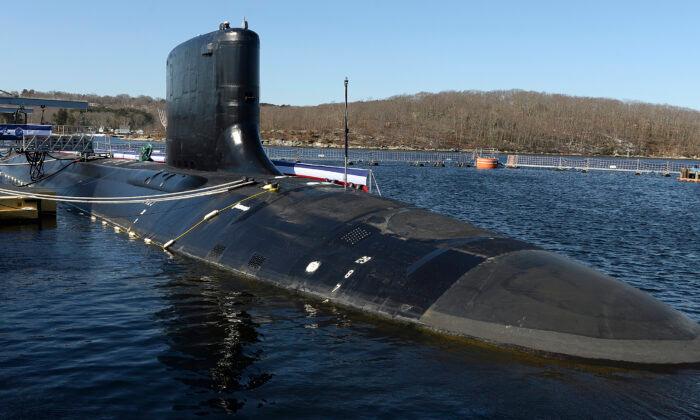Commentary
Increasingly aggressive harassment by Russian pilots of U.S. drones operating in Syrian airspace suggests that the recent deployment of F-22s to protect America’s Syrian operations has failed to intimidate Russia.
Indeed, in the weeks since the two F-22s arrived on the scene, Russian pilots have become increasingly aggressive in harassing American MQ-9 Reaper drones.
July 5,
6, and
7 saw three separate incidents of aggressive harassment of American MQ-9 drones. And while no drones have been destroyed to date in Syrian airspace, a Russian pilot flying a SU-35 engaged its afterburner while directly in front of an MQ-9 drone, damaging it, but not destroying it.
Unsurprisingly, Russia has attributed its escalation to being a response to U.S. actions that include an increase in the frequency of the violations of restricted airspace, as well as going deeper into restricted air space. Additionally, Russia is claiming that American pilots have been provoking Russian pilots by activating their weapons systems, triggering weapons threat warnings on Russian aircraft.
Even if we recognize that neither the United States nor Russia can be counted on to give full and accurate details on what really happened, and the full context in which it happened, we can still ask some questions, such as why are Russian and American aircraft operating in Syrian airspace? For Russia’s part, the answer is easy. Russia is a close ally of Syria and has been asked to help with security operations in Syria and thus has full internationally recognized authority to do so. The answer on the American side isn’t quite as simple.
It turns out the United States has been occupying various locations in Syria since a U.S.-led coalition crossed into Syria on Sept. 22, 2014, in an attempt to remove Syrian President Bashar al-Assad from power. That attempt was
defeated by the Russians, who swooped in to save Mr. Assad. Apparently, the U.S. foreign policy establishment hasn’t yet accepted that defeat and has refused to leave Syrian territory. The U.S. justifies its continued presence under a very broad and liberal interpretation of UN law permitting a country to defend itself. Hence, because America’s ally Iraq has been subject to ongoing attacks by ISIS remnants, not only does it have the right to defend itself, but it can also call on the United States to help do so. So out of this legal rationale, the United States has justified the necessity of
maintaining a number of bases/outposts on northeastern portions of Syrian land, with the biggest military base, al-Tanf, being located in Syria’s eastern al-Omar oilfield.
Along with conducting operations against ISIS and Iranian-backed groups, the United States supports and protects the SDF, a largely Kurdish force dedicated to establishing its
own autonomous zone carved out of Syria. In particular, the United States protects the SDF from the Syrian government. Interestingly, and no doubt maddeningly from Syrian President Assad’s perspective, the United States has been
using the oil proceeds from Syria’s al-Tanf oil field to help fund the SDF.
But while the history of the region is a factor in the current tensions, the anti-Assad/anti-ISIS operations have been going on for years, and it’s only recently that the number and seriousness of the incidents with Russian fighter aircraft and U.S./
NATO aircraft have been on the rise. U.S. Air Forces Central Command Lt Gen. Alex Grynkewich noted that Russian jets were interfering with U.S. drone operations
targeting an ISIS leader. That may be the case in this particular operation, but the United States has also
been attacking Iranian-backed militias operating in Syria. So, if Russia could interfere with drone operations, it would certainly be interfering with ones targeting its ally’s assets.
But, a more obvious reason is Russian anger over the proxy war the United States is waging against Russia—a war the Russian people see as an existential threat to the existence of their nation and which they take very personally. And they’re
much more likely to hold NATO and the United States responsible for the war than they are Ukraine, whom they view as being a U.S. puppet. They also take it personally that the United States is supplying ammunition and weapons to Ukraine for the express purpose of killing Russian soldiers. And the fact that the United States is supplying Ukraine with
real-time targeting and
surveillance data that’s being used to kill Russians and destroy equipment has only added to the anger of Russia’s citizens, who don’t see the loss of unmanned drones by the United States as deserving of being mentioned in the same breath as the deaths the United States has visited on it sons, fathers, and brothers.
And not only does this anger permeate the entire military chain of command, from President Vladimir Putin to the most junior enlisted man; it of course saturates the ranks of Russian pilots. In this environment, talking points about lack of professionalism are meaningless pap and are going to fall on deaf ears. And bringing in a couple of F-22s could be just throwing more gasoline on the fire when you have angry Russian pilots flying planes
uniquely equipped to detect, target, and kill stealth planes.
Hence, with passions running high, and levels of tension much greater than they were a year ago, perhaps it makes sense for U.S. military commanders and civilian policymakers to take a look at current operations, protocols, deconfliction zones, etc., in place in Syria with a mind to modifying them while the United States is in the middle of an emotional/ugly proxy war with Russia. And, after looking at what might be done in these times of increased tensions, communicate these suggestions to their Russian counterparts to let them know U.S. leadership isn’t so dense as to not understand that July of 2023 is a very different environment than January of 2022, and that the United States recognizes that being even more careful than before makes good sense. And rather than bringing in more F-22s to attempt to cow Russian pilots and their commanders, recognize that not having an incident involving piloted planes is more important than stubbornly maintaining any particular operational tempo.
Of course, this all presumes that the United States doesn’t want to go from waging a proxy war against Russia to being in an all-out war with Russia.
Views expressed in this article are opinions of the author and do not necessarily reflect the views of The Epoch Times.





